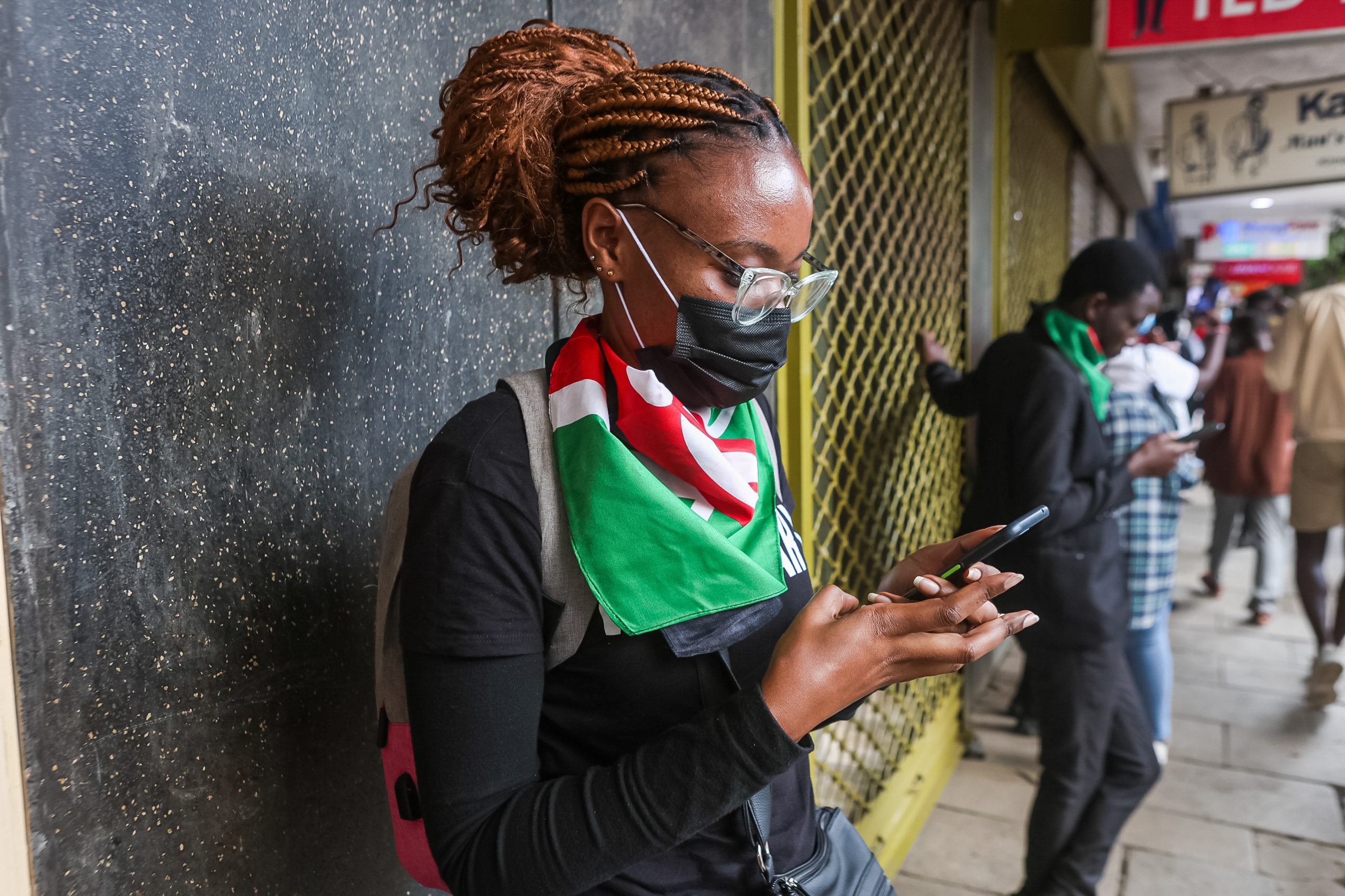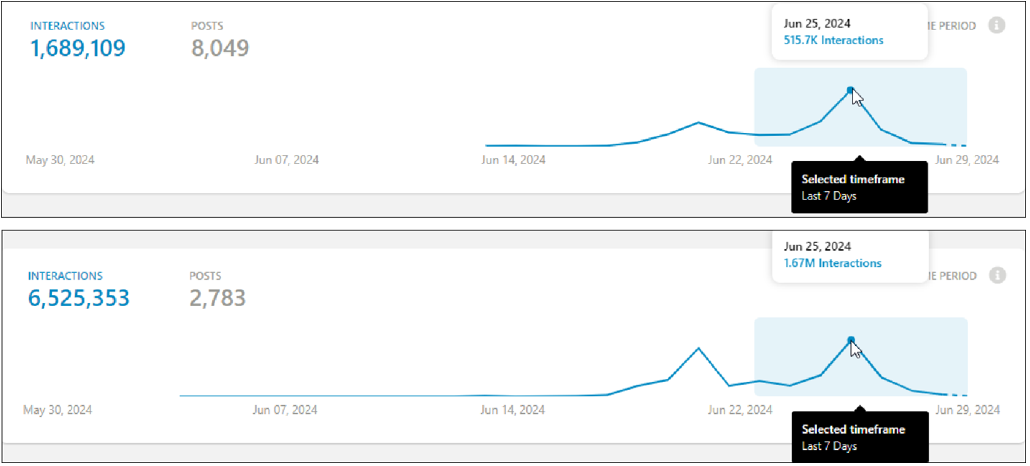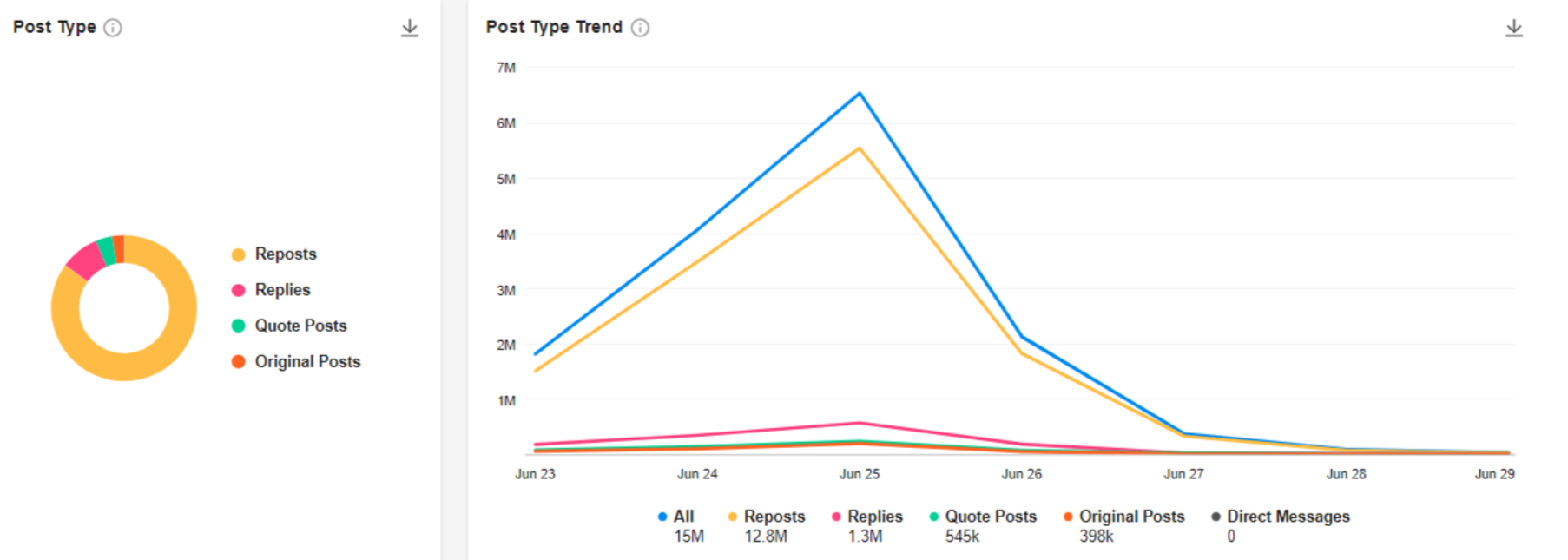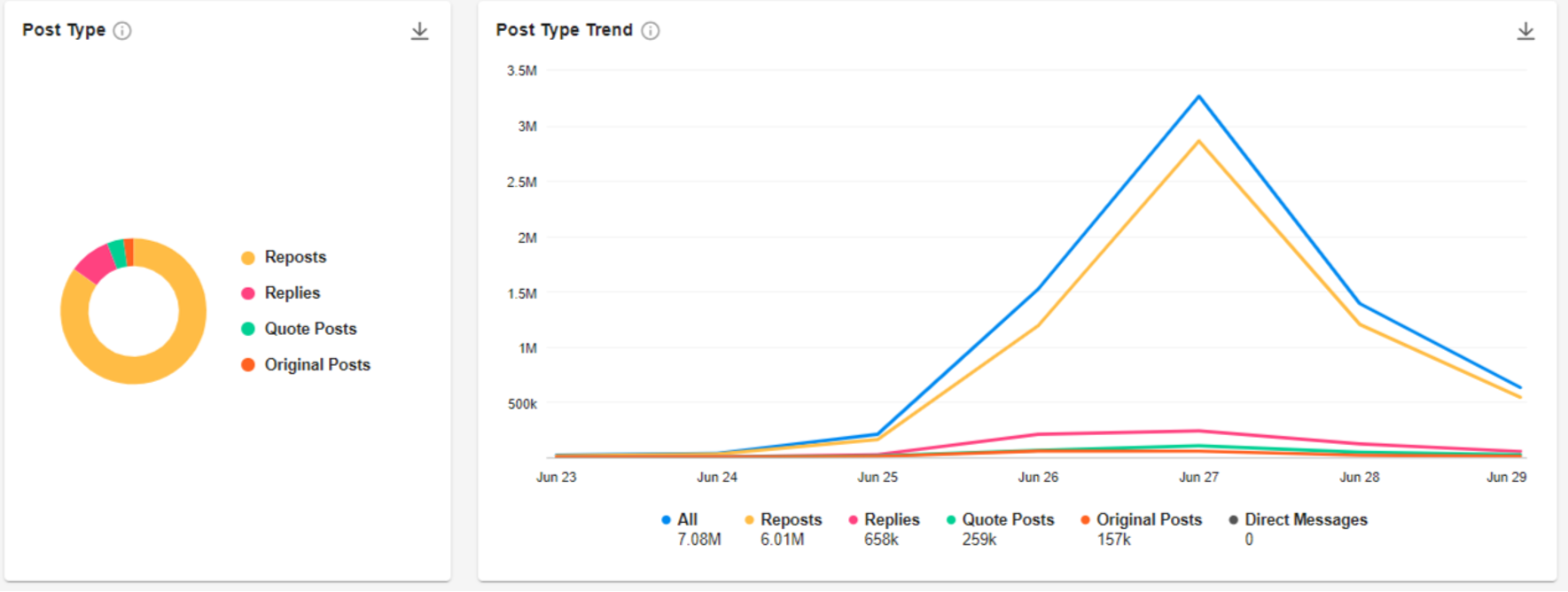How Kenya’s tax bill protests spread online
After the bill’s withdrawal, online conversations continued to call for President Ruto’s resignation
How Kenya’s tax bill protests spread online
Share this story

BANNER: Kenyan youth using smartphones during the June 25 demonstration. (Source: Boniface Muthoni / SOPA Images via Reuters)
As nationwide protests broke out in Kenya in response to a controversial finance bill, social media users engaged heavily with several hashtags to call for the bill’s withdrawal, encourage more protests, and criticize the government, security forces, and President William Ruto.
The finance bill, made public on June 18, 2024, was intended to increase government revenue through tax hikes to satisfy a condition for a loan from the International Monetary Fund (IMF). The proposed financial reforms prompted immediate protests online and in the streets. Security forces responded to the protests with violence, resulting in calls for more protests, with activists vowing for “7 days of rage.” On June 25, demonstrations took place in different parts of the country, with tensions escalating in Nairobi as activists stormed parliament and burned part of the building. The next day, President Ruto, who referred to the protestors as “treasonous,” agreed to withdraw the bill. The violent day of protest left more than thirty dead and hundreds injured.
Social media engagement
The DFRLab analyzed hashtags related to the Kenya protests on X, Facebook, Instagram, and TikTok between June 23 and 29, 2024, observing millions of views on the hashtag #RejectFinanceBill2024.
To determine trending hashtags, the DFRLab reviewed hashtags and topics on X provided by Trends24. Data from the social media listening tool Meltwater Explore shows millions of interactions and views for trending hashtags during and after the protests in Kenya. Among the trending hashtags during the research period were #RejectFinanceBill2024; #Rutomustgo, demanding the resignation of President Ruto; #FreeShad, advocating for the release of Shad Khalif, one of the abducted activists; and #OccupyParliament, calling for protests at the Kenyan parliament.
While it is difficult to know the exact details of user engagement with hashtags on platforms such as Facebook, Instagram, and TikTok, it is still possible to understand some of the interactions using Meta’s data analysis tool CrowdTangle and TikTok’s search function.
On TikTok, for example, the hashtag #rejectfinancebill received 89,000 posts, #RejectFinanceBill2024 received 81,000 posts, #Rutomustgo received more than 20,000 posts, and #OccupyParliament, which was predominantly used in relation to Kenya during the protests, received almost 18,000 posts.
CrowdTangle queries revealed that more than 7,000 Facebook posts used #RejectFinanceBill2024, receiving over 1.5 million interactions. Instagram had higher interactions for the same hashtag, with more than six million interactions on more than 2,700 posts.

On X, the hashtag #RejectFinanceBill2024 received more than 14 million engagements by more than 400,000 unique users and was viewed by more than 750 million users. Engagement with the hashtag decreased following the bill’s withdrawal as attention shifted to hashtags calling for Ruto’s resignation. More than 80 percent of the hashtag’s engagement came in the form of reposts.

Meanwhile, on June 25, the hashtag #Rutomustgo began receiving millions of engagements by over 250,000 unique users; it had been viewed millions of times by the time the bill’s withdrawal was announced. Similarly, over 80 percent of engagements also came in the form of reposts.

Abductions hashtags
Many of the hashtags on X focused on activists and social media influencers abducted before and after the protests. Many of these hashtags also received hundreds of thousands of mentions by hundreds of thousands of users and were viewed by millions. For example, the hashtag #FreeShad, calling for the freedom of activist Shad Khalif, who was abducted on June 23, received over 900,000 engagements. Hashtags calling for the freedom of other activists, such as #FreeOguda, #FreeJaprado, #FreeFranje, and others, also received thousands of engagements and millions of views.
Narratives in hashtags
The primary narratives shared using the hashtags called for rejecting the finance bill and Ruto’s resignation. However, online users also used the hashtags to denounce the actions of security forces, criticize international financial institutions and telecommunications companies, and reject government accusations of treason.
As security forces responded with deadly violence, including killing protesters with live bullets, many of the hashtags against the bill condemned police violence and shared photos and videos of brutality against protestors. Several hashtags were created with a focus on the many abductions and disappearances of social media influencers and activists before and during the protests, such as Gabriel Oguda, Osama Otero, and John Grank Ngemi. These hashtags, which received hundreds of thousands of engagements, often denounced security forces and blamed them for the disappearances of the activists.
Social media posts were also used to share criticisms of the World Bank and IMF for the introduction of financial reforms in Kenya. Some posts called for protests at the IMF’s headquarters in Nairobi.
Moreover, users discussed the possible role of the country’s largest telecommunications provider, Safaricom, which came under fire after the country faced severe internet disruptions on June 25. The company said this was due to disruptions to undersea cables. Some online users were suspicious of the company’s ability to fix the issue so quickly. Users also condemned telecommunications and government officials.
Accusations from Ruto and his government that the protestors’ actions were “treasonous” were also a topic of discussion in the trending hashtags. The hashtags promoted reactions to claims by government spokesperson Isaac Mwaura, before protests expanded on June 25, that some protestors are sponsored by foreign funders dissatisfied with Ruto’s stance on international issues. Media reports said that Mwaura, in a video statement posted on his social media accounts, also claimed that there is dissatisfaction with Ruto from some sides because of remarks he made about Russia’s invasion of Ukraine.
As protests continued and protestors escalated their demands, calling for President Ruto’s resignation and denouncing government corruption, online users continued to use hashtags to amplify these demands. Following the research period from June 23 to June 29, hashtags demanding Ruto’s resignation continued to trend. Moreover, new hashtags emerged, such as #OccupyCBDTuesday, calling for the occupation of Kenya’s central business district, and #OccupyMOH, calling for the occupation of the Ministry of Health.
Cite this case study:
“How Kenya’s tax bill protests spread online,” Digital Forensic Research Lab (DFRLab), July 9, 2024, https://dfrlab.org/2024/07/09/how-kenyas-tax-bill-protests-spread-online/.

